Careful Previs Planning Made a Complex Spot Smooth Sailing on Deadline
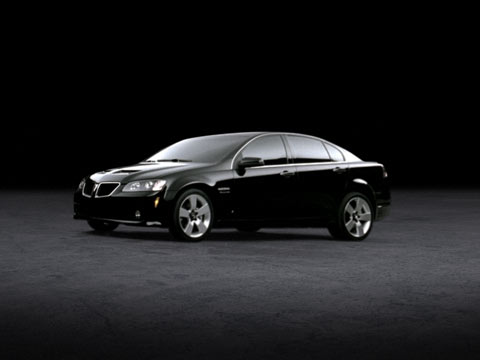
ROBERT SETHI: Obviously, we did a previs with the director. He had written a treatment that had the general ideas, but it wasn’t completely planned and there weren’t any storyboards. Filip and I started with a previs in Maya, with After Effects for the edit. Over the next couple of days we tried out all the ideas that he had and I had on how to make this spot. It wasn’t very clear what we were going to do, and how we were going to do it, until we actually sat down and experimented.
How much of the spot is live action?
Most of it is. After the previs, we had all the measurements of where the car is [in each shot], and what kind of lens we would be shooting with, so at the shoot it was really easy. Obviously the floors in a lot of the shots have been replaced, and the toy race cars are CG, of course. We got the CAD model of the Solstice from the manufacturer and then simplified that, taking away all the details so it looked like a molded toy car.
Had you worked with Filip Engstrom before?
It sounds like you had a good working relationship. No, this was our first project together. It was very fun and creative for both of us. I think it helped him get the vision that he wanted, where he wanted to go with the project. The first time we showed the previs to the agency it was pretty much approved. There was one shot we couldn’t do because of safety regulations with the cars. But we played with a lot of different ideas.
What shot couldn’t you do?
We wanted to do some donuts with the car spinning around and getting a lot of smoke from the back tires. But they didn’t want to do that, so instead we did a peel-out. And again, we wanted a lot of smoke there – but we weren’t really sure they would go for that. So there’s a little bit of a smoke puff there, but that’s it.
You did the previs in Maya and After Effects. Was the final 3D modeling done in Maya as well?
It was all done in Maya and rendered with RenderMan. I think we probably used a little bit of After Effects and Photoshop in the process as well. It was finished in Flame. The set was a big hangar with a white square above the cars. To get the same lighting for the toy cars, we shot HDRIs to match the light. We used that in our lighting pipeline with RenderMan.
Did you shoot spheres?
We actually shoot with a really wide fish-eye lens and then stitch the images together. It makes the lighting go very fast.
Was the spot HD or SD?
SD. We might have done a section in HD. It was all upres’d to HD in the end, but most of it was SD to begin with.
Robert Sethi on “Car in Motion”, shot by shot:
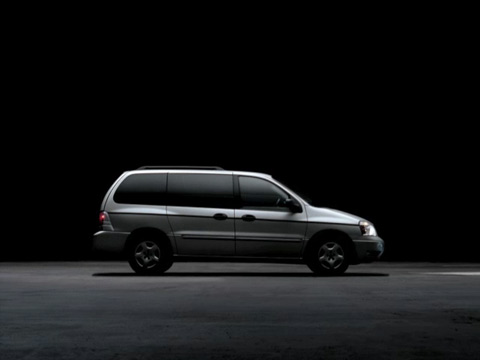

Where the car is falling down, we basically loaded up two lifts with a bunch of junk parts falling down and shot that as a separate layer. We shot the car driving in, and I took some photographs of that and in 3D we did a camera projection onto a plane that falls over. We added a little bit of reflection and used HDRI to get the correct lighting. At the shoot, we actually made a cut-out of a similar silhouette as the car, and there’s tiny amounts of smoke when it hits the ground, so we shot that with a similar shape as a flat car would have and then composited it together. You see that all the parts are landing on top of the board, so that’s a bit of 2D work that [compositor] Patrick Poulatian did in the Flame to get that to work. It’s some CG, and some real – a little bit of a mix, but a pretty straightforward shot.
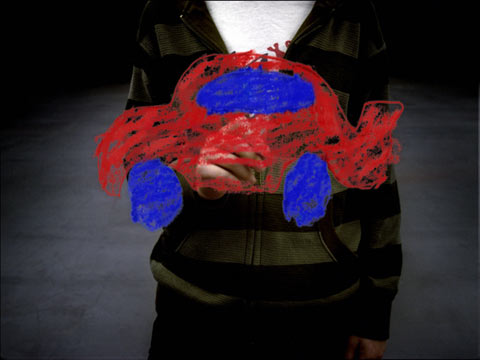
The boy is drawing in the air with a crayon, and [FX Supervisor/Lead Compositor] Mandy Sorenson did this painting and did a compositing trick.

When we’re tilting down, that’s when we put in our CG toy car track. That’s a track that David built. We had done the look development for the cars. We had a little bit of a rig here. It’s like half simulation and half animation. The cars are following the track automatically, but you have the option to add in more animation that makes them look like they’re bouncing around – you can give them the weight of a small, toy car. The design of the track stayed pretty much as it was in the previs. We obviously added in more details so it really feels like a kid’s toy.
Lighting-wise, we used mostly HDRI lighting for this except when the cars are going upside-down. Because everything was lit from above, the cars got really dark – so we faked that by adding more light sources when the car is upside-down in the loop. It makes it more visually appealing, although it’s not realistic.

For the plastic, you had to get it to look nice using some subsurface scattering to bake in how the light scatters inside the plastic. That worked out well. When the Solstice comes in, we shot the car and replaced the ground and did a camera move. That car was shot all locked-off. We did a nodal pan and then a push-in. The CG and the ground is moving and the rest of the stuff is a shot plate that’s tracked to that so it looks like it has the right perspective.
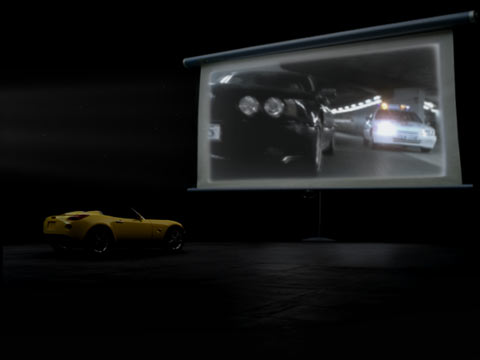
With the cinema screen, again, we’re playing with size. The screen that rolls down looks like one of those you might have in your basement at home. We shot this with a repeat head – shot the car first and did all the lighting passes on it, then shot the screen and moved it closer to camera. It looks bigger, but it’s just a perspective gag.
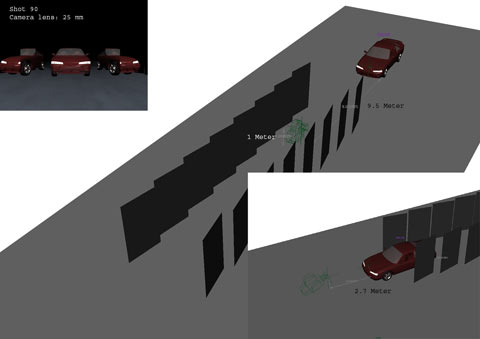


We knew we wanted something that showed vanity, with mirrors. At the same time, we didn’t want it to look too much like a 1980s music video. So we tried a lot of versions of the shot in previs – with spinning mirrors, or from different angles – to see how those affected the car. We had so many different ideas. We were doing shots where the car came in from the side, and we had the mirrors spin, and we put the camera in front of the car so you only saw the car in the mirrors … we were playing with really surrealistic moves. But in the end we felt like they were too complicated. When we came up with something we liked, we took those exact measurements to the set. Otherwise, that’s something you could spend a lot of time with on set, trying to get the right angles with all those mirrors.
Did you enjoy this article? Sign up to receive the StudioDaily Fix eletter containing the latest stories, including news, videos, interviews, reviews and more.










Leave a Reply